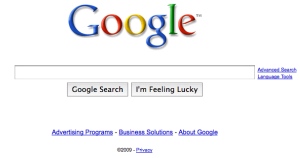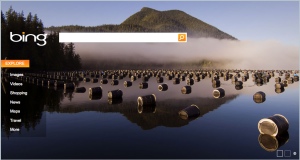
My notebook is filling up with musings on the real-time web. I keep trying to boil things down to the simplest formulation, the simplest expression of why the Network is moving into a real-time mode. It’s more difficult than one would imagine to create a palatable reduction. While we can apply Occam’s razor at a certain level, so much flavor is lost when the particular is replaced with the abstraction.
Occam’s razor states that the explanation of any phenomenon should make as few assumptions as possible, eliminating those that make no difference in the observable predictions of the explanatory hypothesis or theory. The principle is often expressed in Latin as the lex parsimoniae (translating to the law of parsimony, law of economy or law of succinctness). When competing hypotheses are equal in other respects, the principle recommends selection of the hypothesis that introduces the fewest assumptions and postulates the fewest entities while still sufficiently answering the question.
When the web was an exercise in reading, there was no need for real-time. The professional infrastructure of writing and publishing didn’t require much change in the move from offline to online. There was a bright line between professionally produced writing and the amateur personal home page. The pace of publication was a function of the competition between professional writing organizations. The reading of professionally produced writing has always been a distributed affair. A scarce number of writers produce writing for the abundant population of readers. Economics and value ensue from these kinds of ratios.
Search engines are largely based on the traditional economic model of the production of writing. What is returned for a search query should not only be what you’re looking for, but should be authoritative on the subject. Historically we’ve associated the kind of writing product emitted from the professional writing and publishing infrastructure as the most authoritative. While there’s not an explicit provenance, there is an implicit one based on the gesture of the citation link.
As originally conceived, the world wide web was a read-write environment. But clearly the two gestures did not occupy equivalent environments. Reading required a computer, web browser and a connection; writing required so much more. This difference in friction determined the early patterns of development for the Network. To some extent it also deferred the disruption of the established writing and publishing infrastructure.
Writing existed on the Network, but it was contained in the backwaters of the UseNet, Mailing List and the BBS. Real-time writing was limited to instant messenger, internet relay chat and the UNIX talk application. Isolated networks like the Plato System provided a highly sophisticated read-write environment that modeled many of the challenges that today’s Network is confronting.
Reducing the friction in writing to the Network, and here I’m referring to the world wide web, really began with the advent of widely available blogging software. This movement was accelerated by Facebook, MySpace, Twitter, FriendFeed and others. Twitter, in particular, lowered the level of friction to almost zero. This is why a person can now write about what they had for lunch and publish it to the Network. Each of these services is a read-write social environment with public and private publication/broadcast modes. On the level of public gestures, they provide the same level of connectivity as any other public node on the Network.
So let’s loop back to the real-time web. It’s simply the gesture of writing, of making a mark on the Network, that has necessitated the move to real time. But here when we speak of writing, it is a different writing. We don’t refer to the industrially produced writing product created for mass consumption. Instead we refer to making a mark, a gesture, in a dynamic networked environment. The rather clumsy word Stigmergy has been used to draw a circle around some of these ideas.
Stigmergy is a mechanism of spontaneous, indirect coordination between agents or actions, where the trace left in the environment by an action stimulates the performance of a subsequent action, by the same or a different agent. Stigmergy is a form of self-organization. It produces complex, apparently intelligent structures, without need for any planning, control, or even communication between the agents. As such it supports efficient collaboration between extremely simple agents, who lack any memory, intelligence or even awareness of each other.
It is derived from the Greek words stigma (mark, sign) and ergon (work, action), and captures the notion that an agent’s actions leave signs in the environment, signs that it and other agents sense and that determine and incite their subsequent actions
It’s the gesture that necessitates the real-time web. Through public gestures, we make marks in the environment that others can sense and to which they can respond. The latency in the Network needs to be low enough for a flow to occur. The time of the real-time web is a technical speed that enables this flow of marks, traces, actions, gestures to dynamically connect to other marks, traces, actions and gestures in an ongoing loop and become visible to a micro-community that defines the larger emergent social objects.
Writing, in this sense of the word, is no longer about something. It is the thing itself.
One Comment






